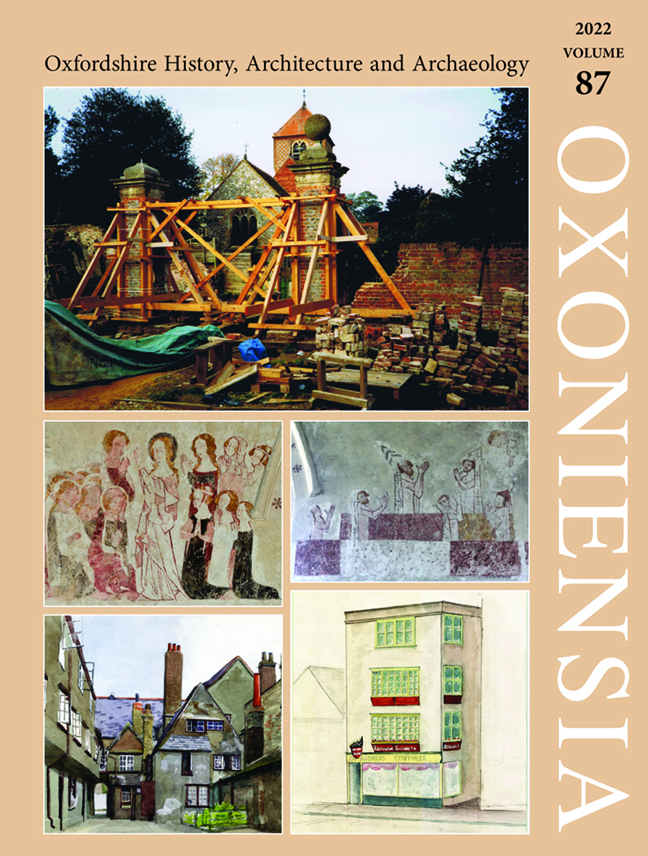West Oxfordshire's ‘Seven Springs’: A Probable Romano-British Springhead Shrine at Showells Farm, Crawley
Published online by Cambridge University Press: 17 February 2024
Summary
SUMMARY
Metal-detecting, geophysical survey and small-scale excavation have identified a Romano- British site on a hill-crest above multiple springs. Massive rectilinear rubble platforms, dissected by a complex system of stone-lined drains, suggest large, formal stone buildings, perhaps ritual structures associated with a spring-shrine, but it remains unclear whether the platforms were ever used. Settlement features nearby are dated to the second century. The ploughsoil produced three Iron Age coins, 150 Roman coins and eleven Roman brooches; three Anglo-Saxon pennies (‘sceattas’) of c.730–50 may be the plough-spread remains of a small hoard. The name Showells (Old English seofon wiellan, ‘seven springs’) suggests that the springs also had a ritual aspect in the post-Roman period.
Showells Farm in Crawley (centred SP 342 134) was built between 1767 and 1816 as an isolated field barn; it developed into a farmhouse with a detached cottage in the late nineteenth century, and acquired an extra free-standing house in the mid twentieth. The site is distinctive topographically, but has not hitherto been noted as archaeologically significant. In 2019, however, Len Jackman, a metal-detectorist based in Hailey, reported finding Roman coins and brooches on the hill-crest north-east of the farm. The complexion of this material suggested the possibility of ritual deposition. The interesting fact was then noted that the place-name is of a well-known type meaning ‘seven springs’, suggesting that the springs at the foot of the hill had sacred or ritual associations in the Anglo-Saxon period. Investigations in 2020, including a geophysical survey (magnetometry) and a small exploratory excavation (Trench I), confirmed a Romano-British date for a group of dug features, and found evidence of settlement.
That would have been the end of the project if ground-clearance in 2021 by a new tenant, Kevin Edginton, had not uncovered a stone-built drain below the spring-line. A Roman date for this seemed possible, so a further geophysical survey (resistivity) was undertaken to locate the source of the drain. This revealed something unexpected: a large, and in places clearly rectilinear, high-resistance anomaly aligned on the south-east-facing slope of the spur.
- Type
- Chapter
- Information
- Oxoniensia , pp. 355 - 394Publisher: Boydell & BrewerPrint publication year: 2022



